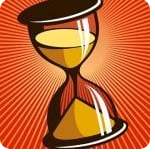The w orld is unbalanced, the way you live your life is unbalanced, so it stands to reason that the way you work or run your business is unbalanced too.
orld is unbalanced, the way you live your life is unbalanced, so it stands to reason that the way you work or run your business is unbalanced too.
How often in life do you spend time on the little things, and how long do they sometimes take.
When you start to look closely at your time, whether personally or professionally you will almost certainly find an 80/20 imbalance.
Think of the possibilities you have if 4 days of your working week produces only 1 days’ worth of results.
Can you therefore, as a business leader afford to ignore the 80/20 principle and its value to you and your business.
So, what is the 80/20 rule and where did it come from?
The 80/20 rule (as a rule of thumb) states that 80% of outcomes can be attributed to 20% of all causes for any given event.
In business it is often used to point out that 80% of a business’s profits are generated by just 20% of its customers.
This is often a statistic that shocks most business owners…
But…
Check your customer list and your profits and you will find the imbalance is there…
The 80-20 rule is also known as the Pareto principle, as it was first used by the Italian economist Vilfredo Pareto to describe the distribution of wealth in Italy in the early 20th century. It was introduced in 1897 when Pareto proved that 80% of the wealth in Italy was owned by 20% of the population.
But 80/20 is as relevant now as it was to Pareto 100 years ago, and can be applied to much more than the wealth of nations. Why not apply 80/20 to your time, effort and resources and see how it improves your results? https://www.bvisionaccountants.co.uk/bitesize-the-80-20-rule/
